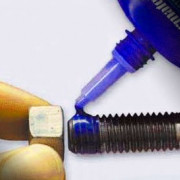What is Corrosion and How Is It Affected by Temperature?
When the environment interacts with metal it can cause corrosion. Corrosion is hard to control and it can cost you money. In fact, millions of dollars are spent each year by consumers and the American industries because of corrosion. But how can that be addressed? How can we change that? This is something that is best looked at from the design perspective. Designers of Building Fasteners such as Hex Cap Screws, Line Fasteners, or Heavy Hex Bolts must consider the properties of the fastener and what components will best suit specific environments. The environment that the fastener is to be used in is one of the most important factors that determine corrosion. The other major factor that determines corrosion is the material that the fastener is made from and the treatments it may have.
Materials
The metal that is best used for fasteners that might be susceptible to corrosion is steel. Protective coatings or plating can help. Thicker coatings are generally more effective. In recent years, there has been the introduction of a new family of steels that is highly resistant to corrosion. These alloy steels, also known as weathering steels, have a higher content of copper. When the fastener is exposed to the elements of the atmosphere in which it is being used, the copper forms a protective oxide surface film that stabilizes the fastener and helps to protect it from corrosive attack.
Nonferrous alloys are more suitable for extremely aggressive environments like paper mills, marine environments, and chemical plants. There are several nonferrous alloys that can be used and each has its own makeup that can be beneficial for fight corrosion. For example, if the fastener is likely to come into contact with chromic acid, Type 316 stainless steel has been known to perform well.
Temperature
Both elevated temperatures and low temperatures can increase the chances of corrosion. Extreme increases or decreases in temperature cause the properties of the materials used in the fastener to be altered. When temperature increases significantly, the strength properties of the fastener decreases due to a breakdown of the coating, galling, seizing, or high temperature oxidation. In situations like this, using high nickel content has reduced the likelihood of corrosion. Any non-metallic components should be avoided if the temperatures of the environment are expected to be very high.
Low temperatures can cause the properties of the fastener to change as well. Usually, toughness and ductility of the fastener decreases as the temperature decreases and this can cause the fastener to become brittle. When a faster breaks or chips it becomes more susceptible to corrosion. If a low temperature environment is expected, any material that has notch-sensitive characteristics should be avoided. Instead, titanium alloys, aluminum and some copper and brasses are good in this environment. Even some non-metallics, like Teflon, can be good to use if the temperature is expected to be very low.
About the Author

Started my career in the fastener world in 1969 at, Parker Kalon Corp. a NJ based screw manufacturer located in Clifton, NJ working in inventory control, scheduling secondary production and concluding there in purchasing. In 1971 I accepted a sales position at Star Stainless Screw Co., Totowa, NJ working in inside sales and later as an outside salesman, having a successful career at Star I had the desire with a friend to start our own fastener distribution company in 1980 named: Divspec, Kenilworth, NJ. This was a successful adventure but ended in 1985 with me starting Melfast in August 1985 and have stayed competitive and successful to date. Melfast serves the OEM market with approximately 400 accounts nationally.
